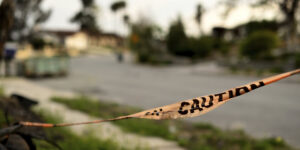GARDEN GROVE, California—If you’re a plaintiff in an injury lawsuit against your insurer, you might want to ask your wife not to post videos online of you frolicking in a swimming pool.
An Instagram post by a woman that showed her husband, an auto injury claimant, jumping onto a boogie board floating in a backyard pool torpedoed the couple’s injury claims. Both husband and wife had claimed they required spinal surgeries to repair their grave injuries.
“If a picture is worth a thousand words, a video is worth 10,000,” said Joseph Jones, president of Bosco Legal Services in Riverside, California.
Jones and Irene Messina, an attorney for Wawanesa Insurance Co., told the tale during a presentation Wednesday at the Combined Claims Conference. They said social media can be a gold mine for insurers disputing false claims, but information must be collected properly and verified for accuracy to ensure that it is admissible.
Jones said investigations that include searches of social media are usually far more productive than sub rosa surveillance. But he cautioned the claims professionals in the audience that there are pitfalls.
He said investigators should never use their personal social media accounts or email addresses because doing so may invite retribution or tip off the subject that he or she is being investigated. He said investigators should use “sock puppet accounts” instead. Or better yet, an investigator can ask to use a social media account of a friend or follower of the person being investigated. Jones said he is often able to get around privacy settings by finding friends or family members who had a falling out with the subject.
Of course, it is possible to create a fake account and send a friend request yourself, but such a tactic could create disciplinary troubles for attorneys. Jones said the San Diego County Bar Association is one several organizations that have pronounced the use of a friend or follow request as an inappropriate ex parte communication. Also, using photos of other people without their permission may violate copyright laws.
Plaintiffs’ attorneys usually will instruct their clients to take down any potentially damaging information from social media accounts, but there are workarounds. Jones said the plaintiff’s friends or family may have posted useful photos or videos.
And then there’s the direct approach: A defense attorney can ask the plaintiff to produce relevant information in discovery. Numerous courts have held that information posted on social media is fair game for opposing lawyers, even if its protected by privacy settings.
“If its on social media, it is in the public domain,” Messina said.
Information collected from social media is useless as evidence if it isn’t verified. A photograph of a plaintiff who claims to be disabled jumping hurdles, for example, may have been taken before the date of the accident.
But Jones said a good investigator can often find ways to verify the timing of a video or photo. In one case, Jones had found on social media a photograph of a claimant riding on a personal watercraft. Jones was able to make out the Department of Motor Vehicles registration number of the vessel and learned that it had been purchased by the claimant’s brother-in-law two months before the photo was posted, long after the date of the plaintiff’s accident. She had testified at trial the photo was taken years before.
Jones also examined the “metadata” that lies beneath the visible social media page. The claimant had written a comment about “riding a Jet Ski today” when she posted the photo, but later deleted the comment. Jones said the metadata revealed the original comment and the date it was posted.
In another instance, Jones used a relative’s social media account to find photos of an auto injury claimant parasailing, riding in a dune buggy and riding piggyback on her husband’s back while jumping off of a boat.
Messina said those photos crushed the plaintiff’s case. She was demanding a $6 million payout.
“We got a zero-dollar jury award,” Messina said.
This article was previously published on Claims Journal. Reporter Jim Sams is the Editor of Claims Journal.





















 Performance Review: Why Insurers Struggle to Underwrite, Price and Reserve for Commercial Auto Risks
Performance Review: Why Insurers Struggle to Underwrite, Price and Reserve for Commercial Auto Risks  Potential Tariff Auto Severity Impact on Travelers: Single-Digits or Less
Potential Tariff Auto Severity Impact on Travelers: Single-Digits or Less  The Future of Premium Audits: Using AI Assistants to Streamline Data Collection
The Future of Premium Audits: Using AI Assistants to Streamline Data Collection  The Future of the Insurance Customer Experience Is Unity, Personalization
The Future of the Insurance Customer Experience Is Unity, Personalization 




